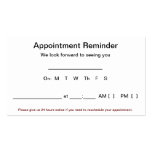Making Safety Pay Off For You
Creating a safe workplace is not only the right thing to do. It is also a smart financial move. It saves the costs that can result from workers’ injuries and avoids penalties that can be imposed by the Occupational Safety and Health Administration (OSHA).
Compliance with OSHA can ultimately create a safer work environment for your employees and help your bottom line. What can you do to improve your business’ safety and profitability? For this article I interviewed Nicholas Fortuna, an attorney and principal in the NYC law firm of Allyn Fortuna who litigates employment-related matters.
Understanding your risks
If you don’t pay attention to safety, workers may be hurt. (According to OSHA, 4.1 million workers suffer serious injuries on the job each year.) What’s more, sooner or later you’re likely to be inspected by OSHA (or a state inspector if your business is located where OSHA-approved plans give states the primary responsibility for inspection and enforcement). Failures found through an inspection can result in substantial government penalties.While small businesses (10 or fewer employees) are exempt from certain injury and illness recordkeeping, they are not exempt from OSHA inspections. Some businesses, such as those in construction or manufacturing, are more likely to draw OSHA’s attention, but other businesses, including restaurants and retail establishments, are not immune, so be prepared!
Assess the hazards
To implement safety measures, you have to know the risks that your workers face each day. To do this properly, assess each aspect of each employee’s job. What are the risks (e.g., noise, chemical exposure, heavy lifting)? The better you can identify the risks, the easier it will be to ensure safety for the job.Provide protective gear
Provide necessary protective gear to your employees. You don’t have a choice; the law requires it for certain equipment (e.g., safety googles, heat-resistant gloves) but not for others (e.g., steel-tipped work boots). Make sure employees know the proper use of the gear and, in fact, use it when required. Where appropriate, routinely test protective gear to make sure it’s doing its job.Create a safety policy
Once you know the risks, you can design a safety policy for employees to follow. Put the policy in writing and mind the 3 Ds:- Do training. While there’s no set OSHA requirement about training frequency, it’s wise to annually repeat certain critical training (e.g., dealing with blood-borne pathogens). As mentioned previously, training should include proper use of protective gear.
- Document workplace incidents. Whenever an employee is injured or has a workplace illness, make a report (even if you are exempt from this OSHA recordkeeping). For certain occurrences, you are required to file a report within 8 hours of an event, regardless of the number of employees. This includes any incident in which 3 or more employees suffer injuries requiring hospitalization at the same time, and any employee death on the job.
- Discipline workers for failing to follow safety policies. Set your company’s policy in this regard. For example, the first failure (e.g., not wearing safety equipment) may only result in a warning; subsequent failures should lead to termination.
Following the 3 D’s is a defensive strategy in case of any OSHA inspection.
Make OSHA work for you
While this government agency can be scary, you can use OSHA to your advantage:- Appoint an employee to trail an inspector if you’re inspected. This person should follow the OSHA inspector and take notes about suggestions to improve the workplace. Not all of the inspector’s ideas may be reflected in an official report; you’ll want to remember personal observations to maximize safety in your workplace.
- Use the OSHA consultation process. This onsite inspection option for small businessesallows you to invite OSHA in, do an inspection, and obtain help in developing a safety plan; all of this is free. Any safety problems found during this initial inspection won’t be penalized. You’ll have a set time (depending on your situation) to correct defects. Remediation may be costly, but the investment in safety likely will pay off in the long run. If you have multiple locations, you’ll have to implement the safety measures in each location.
- Review OSHA resources. Employers are required to know all the OSHA rules applicable to their businesses, which is not an easy thing to do. There are many publications, opinions, and other materials available from OSHA. Of course, you can also bring in a safety consultant to help you for a fee. And you can check resources that may be available from your trade association relevant to safety developments that apply to your industry.







No comments:
Post a Comment